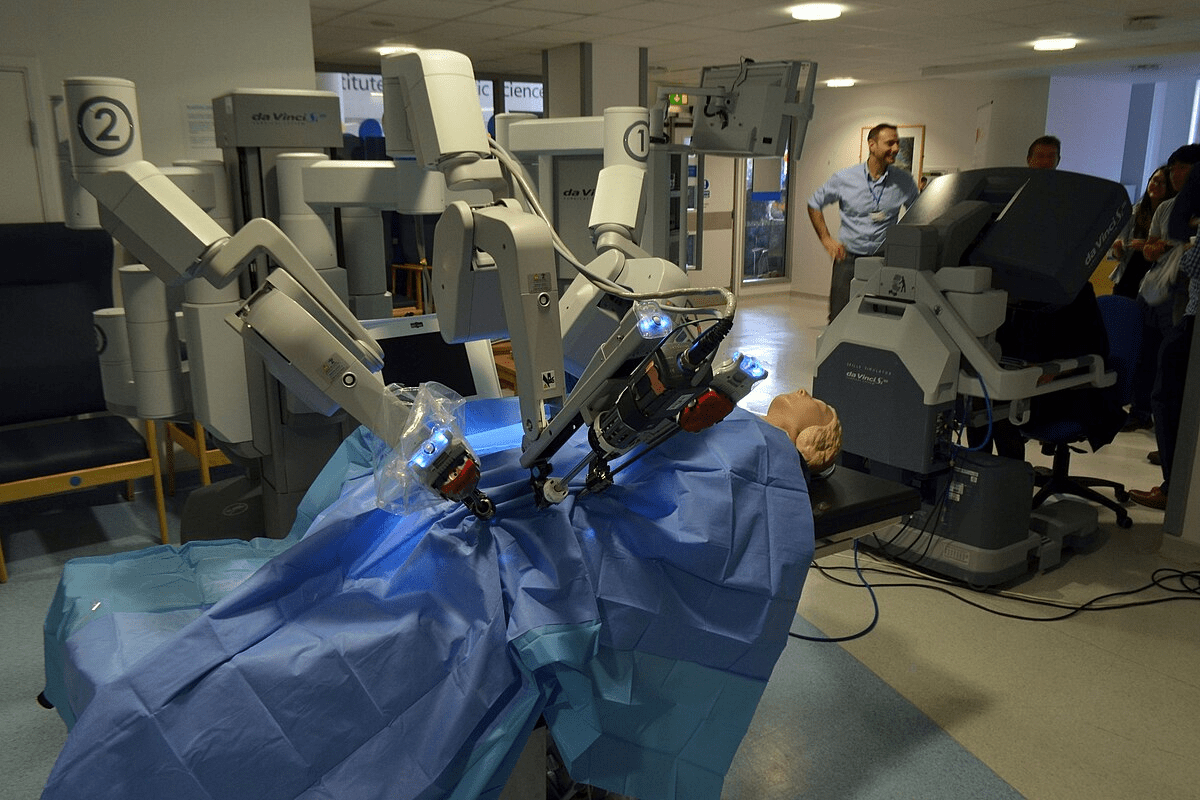Last Updated on November 26, 2025 by Bilal Hasdemir

If you’re dealing with ongoing neck pain, learning about cervical radiofrequency ablation reviews might help. At Liv Hospital, we aim to offer top-notch care and put our patients first.
Many people with chronic neck pain have seen big improvements. Research shows that 70-85% of them get a lot of relief. This makes it a good choice for those with cervical facet joint syndrome.
Patients looking into this treatment want to know it works well and what side effects might happen. In this article, we’ll dive into the important parts of radiofrequency ablation patient reviews and common side effects.
Key Takeaways
- Significant pain relief for many patients
- High success rate of 70-85%
- Potential side effects to be aware of
- Comprehensive care at Liv Hospital
- Patient-centered approach to treatment
What You Need to Know About Cervical Radiofrequency Ablation

Cervical radiofrequency ablation is a new way to manage chronic neck pain. It’s a minimally invasive treatment that offers significant pain relief with little downtime. Let’s dive into what this procedure is, why it’s done, and what conditions it treats.
Definition and Purpose of the Procedure
Cervical radiofrequency ablation (RFA) is a method to reduce chronic neck pain. It targets the nerves that carry pain signals. The goal is to stop these signals from reaching the brain, easing neck pain.
The process uses a special device to apply radiofrequency energy to nerves. This energy heats the nerves, creating a lesion. This lesion stops the nerves from sending pain signals, aiming for long-term pain relief.
How Cervical RFA Works
The cervical RFA process has several steps. First, the patient lies on an X-ray table. The area is cleaned and numbed. Then, a needle electrode is inserted under fluoroscopic guidance.
Once in place, a gentle electrical current is applied to confirm the nerve’s location. Radiofrequency energy is then used to heat the nerve tissue, creating a lesion. This technique targets nerves that carry pain from the cervical facet joints.
Conditions Commonly Treated
Cervical radiofrequency ablation is mainly for chronic neck pain from cervical facet joint syndrome. This condition happens when the facet joints in the neck get inflamed or irritated. Other conditions treated include:
| Condition | Description |
| Cervical Facet Joint Syndrome | Inflammation or irritation of the facet joints in the neck |
| Whiplash-associated Disorders | Pain and stiffness in the neck following a whiplash injury |
| Cervical Spondylosis | Age-related wear and tear on the cervical spine |
Knowing what cervical RFA can treat helps patients understand its benefits. This knowledge aids in making informed decisions about their care.
The Science Behind Cervical Nerve Ablation

Cervical nerve ablation works by stopping pain signals from reaching the brain. It’s a small procedure that uses radiofrequency energy to target nerves in the neck. This helps people with chronic neck pain find relief.
Mechanism of Pain Relief
This method uses radiofrequency energy to heat up nerves. This heat stops the nerves from sending pain signals to the brain. This process is called neuromodulation. The nerve then dies, which blocks the pain pathway.
Patients then feel much less pain in their neck.
“Recent studies have shown that cervical nerve ablation can provide substantial pain relief for patients suffering from chronic neck pain, with some experiencing up to 50% reduction in pain symptoms.”
Target Nerves in the Cervical Spine
The cervical spine has seven vertebrae and many nerves. The main nerves targeted are the medial branch nerves. These nerves are in the back of the neck and carry pain signals from the facet joints.
Expected Duration of Treatment Effects
How long pain relief lasts can vary. But studies show that 70-85% of patients get 50% pain relief 6-12 months after treatment. The relief can last from 6 to 24 months, based on the patient’s condition and health.
| Study | Success Rate | Duration of Relief |
| Multicenter Study 1 | 75% | 6-12 months |
| Multicenter Study 2 | 80% | 12-18 months |
| Clinical Trial | 85% | 6-24 months |
Knowing how cervical nerve ablation works helps patients make better choices. It’s important to talk to a doctor to see if it’s right for you.
Patient Selection Criteria and Pre-Procedure Steps
We carefully choose who gets cervical RFA to ensure success. This treatment works best for those with chronic neck pain from cervical facet joint syndrome.
Ideal Candidates for Cervical RFA
Those who haven’t improved with physical therapy or medicine are good candidates. Chronic neck pain from cervical facet joint syndrome is a key reason for this treatment.
We look at a patient’s medical history, symptoms, and treatments. We also do a physical check to see if cervical RFA is right for them.
Diagnostic Nerve Blocks as Predictors
Diagnostic nerve blocks are key in predicting cervical RFA success. They numb the pain-causing nerves, showing if RFA will help.
“Diagnostic nerve blocks are a valuable tool in our patient selection process, allowing us to identify those most likely to benefit from cervical RFA.”
If a patient responds well to these blocks, they’re likely to get a lot of pain relief from RFA.
Preparation Guidelines
After deciding a patient is a good fit for cervical RFA, we give them detailed prep. This ensures a smooth and successful procedure.
| Preparation Step | Description |
| Medication Adjustment | Patients are advised to adjust or temporarily stop certain medications that could interfere with the procedure or recovery. |
| Pre-Procedure Testing | We may conduct additional tests or examinations to confirm the patient’s suitability for RFA. |
| Post-Procedure Arrangements | Patients are encouraged to make arrangements for someone to drive them home after the procedure and to have assistance at home for the remainder of the day. |
By choosing the right candidates and giving clear prep, we aim for the best results with cervical RFA.
Comprehensive Cervical Radiofrequency Ablation Reviews
Cervical radiofrequency ablation is a top choice for chronic neck pain. Many studies prove it works well. Looking into this treatment, we see it’s all about success rates, study results, and lasting effects.
Clinical Success Rates (70-85% Relief)
Studies show cervical radiofrequency ablation helps 70% to 85% of patients. This success comes from targeting pain nerves precisely. Patients often see a big drop in pain, making life better.
This treatment is not invasive and offers lasting pain relief. It blocks pain signals to the brain, a good choice over surgery.
Multicenter Study Results
Multicenter studies show cervical radiofrequency ablation works for many. These studies, done in different places, prove it’s good for chronic neck pain. They help make it a trusted treatment.
One big study found that patients got much less pain. Many kept feeling better over time. This shows it’s great for long-term pain control.
Long-term Efficacy Data
Long-term data on cervical radiofrequency ablation is promising. It shows the treatment can last a long time. Most patients stay pain-free for a while.
Studies on long-term effects show it can be done again for more relief. This is key for those with ongoing pain, as it offers a lasting solution.
7 Key Patient Experiences After Neck Ablation
Patients’ stories after neck ablation show a wide range of experiences. These stories are helpful for those thinking about this procedure.
Pain Reduction Testimonials
Many patients say they feel much less pain after neck ablation. A study showed that 70-85% of patients felt a big relief from chronic neck pain. These stories show the good things about the procedure.
One patient said, “I felt 90% less pain after the procedure. It changed my life.” Such stories prove neck ablation works well for many people.
Functional Improvement Reports
Patients also talk about moving better after neck ablation. The procedure helps them move like normal again and feel less stiff. This makes it easier for them to do their daily tasks.
A table summarizing patient-reported outcomes is shown below:
| Outcome | Percentage of Patients |
| Pain Reduction | 80% |
| Improved Functionality | 75% |
| Enhanced Quality of Life | 90% |
Recovery Timeline Experiences
Recovery times vary, but most get back to normal quickly. Some might feel a bit sore, but most get back to their usual life in a few days.
Quality of Life Enhancements
Neck ablation makes life better for many patients. It reduces pain and helps them move better. This lets them enjoy life more and do things they couldn’t before.
One patient said, “The procedure let me go back to my favorite hobbies without pain.” This shows how neck ablation improves life quality.
Common Side Effects of Cervical Ablation
Knowing about common side effects of cervical ablation helps patients get ready for recovery. Cervical radiofrequency ablation is mostly safe, but there are possible side effects to know about.
Temporary Burning and Numbness
Temporary burning or numbness in the treated area is a common side effect. This feeling is usually mild and goes away in a few days to weeks after the treatment.
Post-Procedure Pain Increase
Some people might feel more pain right after the procedure. This pain is usually short-lived and can be managed with over-the-counter pain meds or other simple steps.
Skin Irritation and Swelling
Skin irritation or swelling at the procedure site is another common side effect. This is usually mild and goes away without needing extra treatment.
Duration of Common Side Effects
How long these side effects last can vary. Generally, most side effects go away in a few days to weeks after the treatment. It’s key for patients to follow their healthcare provider’s advice for aftercare to avoid complications.
Common Side Effects Timeline:
- Immediate Post-Procedure: Pain increase, skin irritation, swelling
- First Few Days: Temporary burning or numbness
- Resolution: Most side effects resolve within 2-6 weeks
While these side effects are common, serious problems are rare. Patients should talk to their healthcare provider about any worries or unusual symptoms.
Serious Risks and Cervical Ablation Complications
It’s important to know the possible complications of cervical ablation before making a decision. We try to avoid risks by choosing the right patients and using careful techniques. But, it’s key to know about the serious risks that can happen.
Infection Risks and Prevention
Infection is a rare but serious risk with cervical ablation. We use strict precautions to avoid infection, like sterile tools and proper wound care. We also teach patients how to care for themselves after the procedure to lower this risk.
Nerve Damage Concerns
Nerve damage is another risk with cervical ablation. Even with advanced imaging, there’s a small chance of hurting nerves around the area. This could lead to numbness or pain that might last a while or even be permanent.
Dizziness After Cervical Medial Branch Block
Some people might feel dizzy after a cervical medial branch block, which is sometimes done with cervical ablation. This dizziness is usually short-lived and goes away by itself. But, we tell patients to have someone with them when they go home.
When to Seek Immediate Medical Attention
Even though it’s rare, there are times when you need to see a doctor right away. Look for severe pain, signs of infection like redness or swelling, or any unusual symptoms after the procedure.
To understand the risks and complications of cervical ablation better, let’s look at some important data:
| Complication | Risk Level | Prevention/ Management |
| Infection | Low | Sterile technique, antibiotic prophylaxis |
| Nerve Damage | Low to Moderate | Advanced imaging guidance |
| Dizziness | Moderate | Post-procedure monitoring, accompaniment home |
By knowing these risks and taking steps to reduce them, we can make sure our patients have the best results from cervical ablation.
Comparing Cervical RFA to Alternative Neck Pain Treatments
Cervical RFA is a key treatment for neck pain. It’s less invasive than surgery and helps patients recover faster. Knowing how cervical RFA compares to other treatments is important for those seeking relief.
Surgical Interventions vs. Minimally Invasive RFA
Cervical RFA and surgery have big differences. Surgery is more invasive and takes longer to recover from. But, cervical RFA is a minimally invasive procedure that offers quick pain relief with fewer risks.
- Reduced Recovery Time: Cervical RFA lets patients get back to their daily life sooner.
- Lower Risk of Complications: Its minimally invasive nature lowers the risk of surgery complications.
- Effective Pain Relief: Many patients find cervical RFA to be very effective in managing pain.
Medication Management Approaches
Medications are a common way to treat neck pain. But, they can have side effects and don’t always solve the pain’s root cause. Cervical RFA, by targeting pain nerves, offers a more durable solution.
- Medications might help in the short term but can have long-term side effects.
- Cervical RFA provides a longer-lasting solution by addressing the pain source.
Physical Therapy and Conservative Options
Physical therapy and other conservative treatments are good for mild to moderate pain. They’re often suggested before trying more invasive treatments like cervical RFA. But, for severe or chronic pain, cervical RFA might be a better choice for lasting relief.
Comparing cervical RFA to other treatments helps patients and doctors choose the best option. The severity of pain, patient health, and treatment goals are all important in making this decision.
Recovery Protocol and Aftercare Guidelines
After cervical RFA, it’s key to follow aftercare steps. This helps you get the most from your treatment and avoid problems. A good recovery plan ensures a smooth healing process and the best results.
Immediate Post-Procedure Instructions
Right after cervical RFA, you’ll be watched for any bad reactions. Make sure someone drives you home because you might feel sleepy or numb. Always listen to your doctor’s specific instructions as they might have special advice for you.
Here are some common things to do right after:
- Rest for the rest of the day
- Avoid hard activities for at least 24 hours
- Use ice packs on the treated area to ease pain
- Take over-the-counter pain meds as your doctor says
Activity Restrictions and Timelines
Even though cervical RFA is a small procedure, you should avoid some activities. Usually, you can go back to normal in a few days. But, it’s important to slowly get back to full activity to avoid problems.
Here’s a basic guide for what activities to avoid:
| Activity Level | Recommended Timeline |
| Light activities (e.g., walking, light housekeeping) | Can resume within 24-48 hours |
| Moderate activities (e.g., driving, light exercise) | Can resume within 3-5 days |
| Strenuous activities (e.g., heavy lifting, intense exercise) | Should be avoided for 1-2 weeks |
Follow-up Care Schedule
It’s important to have follow-up visits to check how the treatment is working. We usually schedule these at 2-4 weeks and 3 months after to see how you’re doing.
At these visits, your doctor will:
- Check if the pain is better and if you’re moving better
- Look for any signs of problems
- Change your treatment plan if needed
Managing Muscle Weakness After Treatment
Some people might feel their muscles are weaker after cervical RFA. This is often because of the nerves being affected by the procedure. Most of the time, this weakness goes away in a few weeks.
To deal with muscle weakness:
- Do gentle stretching and strengthening as your doctor suggests
- Avoid doing too much
- Use tools to help with moving and staying safe if needed
Conclusion: Weighing the Benefits and Risks of Cervical Ablation
Cervical ablation is a treatment for chronic neck pain. It offers pain relief and better function for many. Knowing the cervical ablation benefits and risks helps patients make informed choices.
We’ve looked at how the procedure works, who it’s for, and how often it succeeds. Our team supports patients every step of the way. It’s key to consider the cervical ablation risks and benefits before deciding.
Personalized care helps patients get the best results and live better lives. If you have chronic neck pain, talk to a healthcare professional. They can help find the best treatment for you.
FAQ
What is cervical radiofrequency ablation?
Cervical radiofrequency ablation is a procedure to help with chronic neck pain. It targets pain from the cervical facet joint.
How does cervical RFA work?
It uses radiofrequency energy to block pain signals to the brain. This helps patients with chronic neck pain find relief.
What are the common side effects of cervical ablation?
Side effects include temporary burning and numbness. You might also feel more pain after the procedure. Skin irritation and swelling are also possible.
How long do the effects of cervical RFA last?
Studies show 70-85% of patients see lasting pain relief. This relief can last 6-12 months after the procedure.
What are the serious risks and complications associated with cervical ablation?
Serious risks include infection and nerve damage. Dizziness is also a risk. Seek medical help if symptoms worsen.
How do I prepare for cervical RFA?
Start with diagnostic nerve blocks to see if it will work. Follow your healthcare provider’s pre-procedure instructions carefully.
What is the recovery process like after cervical RFA?
You’ll get immediate instructions after the procedure. You’ll need to rest and follow a recovery plan. This helps avoid complications.
Can cervical RFA be compared to other neck pain treatments?
Yes, it’s like comparing it to surgery, medication, or physical therapy. Cervical RFA is less invasive and has quicker recovery times.
Will I experience dizziness after cervical medial branch block?
Some people might feel dizzy after the procedure. If it’s severe or lasts, talk to your healthcare provider.
How effective is cervical RFA in reducing pain?
Many patients find it effective in reducing pain. It helps them feel better and function more easily.
References
- Provenzano, D. A., et al. (2025). Assessment of real-world, prospective outcomes in patients treated with radiofrequency ablation for cervical facetogenic pain. Pain Practice. https://pubmed.ncbi.nlm.nih.gov/40896553/






